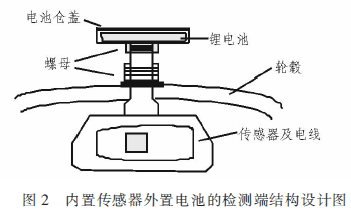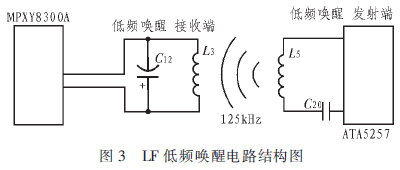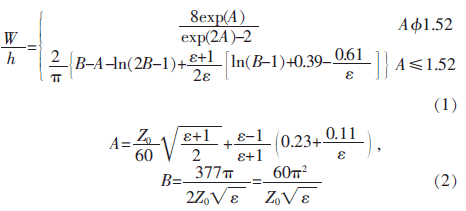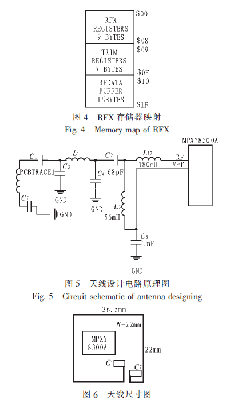According to a survey by the Society of Automotive Engineers, 260,000 traffic accidents per year in the United States are caused by low tire pressure or leakage. In addition, 75% of tire failures per year are caused by tire leakage or insufficient inflation. According to the statistics of the relevant departments in China, 46% of the traffic accidents on the expressway are caused by the failure of the tires, and one of the punctures accounts for 70% of the total accidents. At the same time, with the development of China's social and economic level and the automobile industry, China's automobile production and sales are increasing year by year. According to the statistics of the China Automobile Association, China's automobile production reached 18,264,667 vehicles in 2010, an increase of 32.44% year-on-year, and China's total vehicle sales will maintain rapid growth in the next 10 years. Therefore, how to reduce traffic accidents and minimize traffic accidents caused by tire punctures, especially the prevention of mass casualties caused by this, has become a common concern of all sectors of society. The tire puncture monitoring system can monitor the pressure and temperature of each tire in real time, and alarm the tire leakage, over-pressure, over- or over-temperature. Its work can effectively reduce the occurrence of car puncture accidents, and is an effective guarantee for safe driving of cars.
This article refers to the address: http://
1 System introduction
At present, the tire puncture warning system that has been introduced can be divided into two types: one is indirect and the other is direct. The indirect type mainly compares the rotational speed difference between the tires through the wheel speed sensor of the automobile ABS system, thereby indirectly measuring the tire air pressure, and has gradually faded out of the market due to poor accuracy. The direct type mainly uses the pressure and temperature sensors installed in each tire to directly measure the tire pressure and temperature, and then communicates with the control host installed in the cab through radio frequency wireless communication. The host displays information about each tire or carries out pressure, Temperature alarm, its working principle is shown as in Fig. 1. 
At present, most of the car tires have eliminated the inner tube, which brings great convenience to the installation of the built-in inductive sensor of the tire. Its products occupy the vast majority of the application market, and the development speed is faster, but in the direct tire explosion In the development and application of the fetal warning system, due to the complexity of its environment, it requires more reliable hardware design to maintain the stable operation of the system. Two outstanding problems seriously restrict the development of the tire puncture warning system. One is how to extend the total working time of the system, and the second is how to enhance the effective transmission of data through the design of the RF antenna at the detection end. Based on these two outstanding problems, this paper improves the hardware design of the tire puncture warning system, thus effectively extending the system working time and the reliability of the antenna RF signal transmission.
2 Extend system working hours
The traditional tire pressure and temperature detection end usually seals the sensor, the microcontroller, the RF antenna and the battery on one circuit board, and the aluminum screw is fixed on the hub through the tire valve. The detection battery cannot be updated, and the total working time is Depending on the system power consumption and battery capacity, once the battery is dead, a new test terminal must be replaced. This one-off approach is not only labor-intensive but also costly to operate, which causes great difficulties in popularizing tire flat tire warning systems. This paper effectively extends the system working time by designing a replaceable tire monitoring terminal battery structure and using LF low frequency wake-up technology to reduce power consumption.
2.1 detection terminal built-in sensor external battery design
In this paper, a design of a built-in sensor external battery applied to the tire detection end is designed. The biggest difference between this design and the traditional method is that the lithium battery is externally fixed and fixed on the tire valve. On the basis of reliable power supply to the measuring end, the battery can be easily replaced, and the working time of the detecting end can be extended indefinitely. as shown in picture 2. The positive and negative terminals of the battery are powered by special pads and isolated from each other by an insulating rubber pad. When you need to inflate your tires, simply unscrew the battery compartment and inflate the tires directly. It should be emphasized that due to the installation of the battery and the sensor, the quality of the tire is unevenly distributed. When the tire rotates at a high speed, the unbalanced centrifugal force causes the vehicle body to vibrate, affecting the handling performance and safety performance of the vehicle. Therefore, before use, it is necessary to perform static balance, couple balance and dynamic balance tests on four tires. At the same time, it should also ensure that the same type of battery of the same manufacturer is replaced when the battery is exhausted, and the balance parameters of the tire are guaranteed. 
2.2 LF low frequency wake-up device
Extending the total operating time of the system can also take the form of reducing the current consumption at the measuring end of the tire. That is, when the car is stopped or running at a low speed, the system does not need to know the parameters of the tire, and the tire detecting end can enter the sleep state. When the system requires tire data, the LF low frequency wake-up device can be used to wake up the sleepy tire detection end. The so-called low-frequency wake-up technology is developed from the resonant circuit, as shown in Figure 3. The right side of the figure is a series resonant circuit composed of LC, and its natural resonant frequency is  When the antenna L3 receives this frequency signal, it will cause the circuit to resonate to generate an induced voltage. From the electromagnetic field theory: r<<λ/2π=c/2πf, magnetic field induction can be received. Where λ is the signal wavelength, f is the signal frequency, c is the speed of light, and r is the distance between transmission and reception. The LF low-frequency signal is 125 kHz. According to the above formula, the applicable distance can reach hundreds of meters, which is completely suitable for the distance between the cab and the tire of 1~2 m.
When the antenna L3 receives this frequency signal, it will cause the circuit to resonate to generate an induced voltage. From the electromagnetic field theory: r<<λ/2π=c/2πf, magnetic field induction can be received. Where λ is the signal wavelength, f is the signal frequency, c is the speed of light, and r is the distance between transmission and reception. The LF low-frequency signal is 125 kHz. According to the above formula, the applicable distance can reach hundreds of meters, which is completely suitable for the distance between the cab and the tire of 1~2 m. 
In practical applications, the control module in the cab can be used to transmit a 125 kHz LF signal to each tire direction through a three-dimensional orthogonal array antenna (three antennas are respectively placed in the x, y, and z directions), and the signal triggers the LC resonance circuit of the tire detection module. Thereby waking up the detection terminal in the sleep state. In this process, the Manchester-encoded serial data is modulated by the LF drive circuit to the low-frequency carrier. Finally, the power is amplified and transmitted by the low-frequency antenna. After the detection terminal receives the low-frequency wake-up signal, the signal is processed and decoded according to the signal. Perform temperature and pressure measurement, data conversion, RF transmission, and hibernation.
The detection end of the design uses Freeseale's MPXY8300A sensor, which itself has integrated LF low frequency wake-up circuit. The LF low frequency wake-up transmitter uses the ATA5275 chip. The structure of the low frequency wake-up circuit is shown in Figure 3. This will reduce the operating time of the tire puncture warning system by reducing the working time to reduce system energy consumption.
3 tire detection terminal RF antenna design
Due to the serious electromagnetic interference of the car itself, and the high temperature and high temperature working environment of the tire, the antenna design becomes a prerequisite for the stable operation of the TPMS system. In order to enhance the antenna transmission efficiency and reduce the volume of the transmitting end, the antenna adopts a microstrip antenna made directly on the PCB. This system selects a 1/4 wavelength monopole printed antenna. The biggest feature of this kind of antenna is that it can be adjusted to different environments by adjusting the length. The system selects the frequency of 433.92 MHz, the antenna is made of FR4 material with thickness h=1.6 mm, and the dielectric constant ε=4.4, assuming that the network matching impedance is 50 Ω, according to the antenna size formulas (1) and (2) The 1/4 wavelength antenna width W = 1.5 mm and the length L = 9.72 cm. 
The quality factor is an important parameter of the antenna design. For a fixed-size antenna, the higher the quality parameter Q, the greater the output power, but the transmission bandwidth B of the antenna is inversely proportional to the quality factor. Too high a quality factor will reduce the transmission. Bandwidth, affecting the correct transmission of data information, the quality factor of the loop antenna of the system is determined by the total resistance R in the loop, the ray frequency f, and the circumference l of the loop antenna, which can be expressed as formula (3): 
The TPMS tire detection terminal RF transmission circuit is integrated into the MPXY8300A chip, which greatly reduces the structure of the RF circuit. The MPXY8300A sets each RF transmission parameter by an internal RFX module containing 32 8-bit registers. The memory mapping structure is shown in Figure 4. The MCU transmits 128-bit data stored in $10-$1F through the antenna (315/433 MHz). The circuit schematic and antenna dimensions are shown in Figure 5 and Figure 6. 
4 Conclusion
In this paper, the development and application of tire puncture warning system are discussed, and the stability of hardware design is discussed in detail in two aspects: extending system working time and antenna design. Based on Freescale's MPXY8300A sensor, the tire detection terminal has built-in sensor external battery, LF low frequency wake-up and 433MHz RF antenna design. Compared with the traditional technology, these improvements have improved in system function, physical size and energy saving, and have certain practical value.
shipboard wire 0.6/1kv 90℃, CBYJ, CBYJR
The shipboard power cables are intended for power, lighting and control system of shipboard and off-shore building, and it also can be used by metallurgical industry, chemical works, power plant and mine etc.
standards applied: IEC60092-350
IEC60092-353
IEC60092-360
IEC60228
IEC60332-1-22
IEC60332-3-22
IEC61034
IEC60754
IEC60684-2
Product making: factory name, type, rated voltage.
Core making: color marking or printed numbers.
Marine Wire,Marine Wiring Cables,Stranded Copper Wire,Electric Wires Cables
Jiangsu Jiangyang Special Cable Co,.Ltd. , https://www.jymarinecable.com